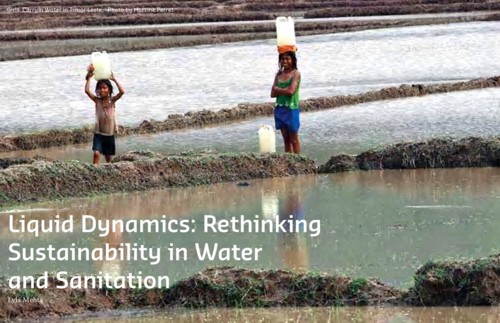This paper begins with the slow rate of progress in achieving the millennium development goals of environmental sustainability, especially in the areas of water and sanitation. This is due to the disconnect between the global rhetoric (which often focuses on water as an economic good) and social realities (such as the cultural attitudes towards water)
 Understanding liquid dynamics
Understanding liquid dynamics
Here, the interaction between the social, technological, ecological and hydrological aspects of water and sanitation processes across different timeframes, shaped by power and social relationships across several different participant groups are termed as 'liquid dynamics'.
The paper emphasises that directed governance measures are neeed to ensure that the concerns of the marginalised and resource poor are addressed.
Developing pathways to sustainability in water and sanitation
A water and sanitation system that provides marginalised groups with the services valuable to them , and copes with dynamic processes such as extreme events and changes in the magnitude of the system can be considered to be sustainable.
Acheiving this sustainability requires that the following issues be considered:
- Building resilient, robust, durable, and stable systems that can withstand various stresses such as climate change and rapid growth among others.
- Including water and sanitation dynamics as framed by various groups into the system.
- Using various governance and appraisal systems that enable inclusion of marginalised peoples' perspectives in the provision of services.
- Appreciating the influence of local history and culture to create systems that are significant on the ground.
/articles/liquid-dynamics-rethinking-sustainability-water-and-sanitation